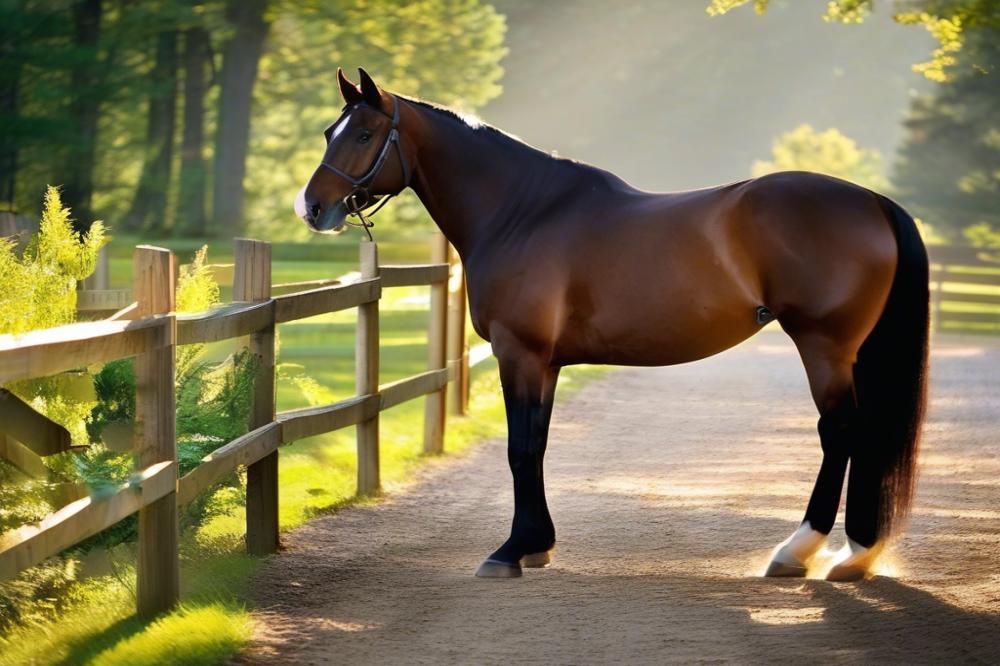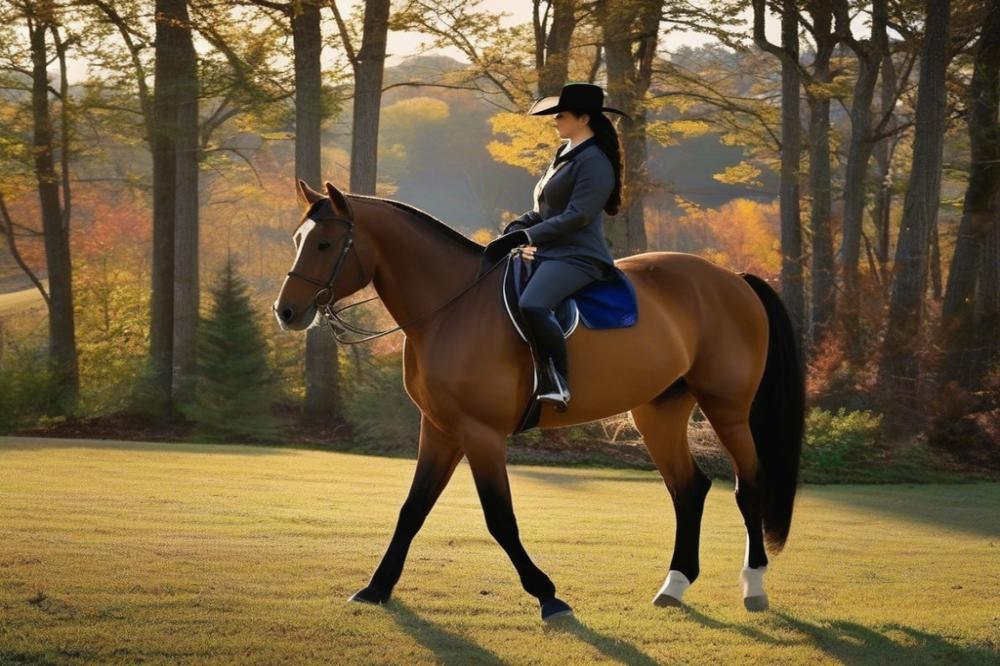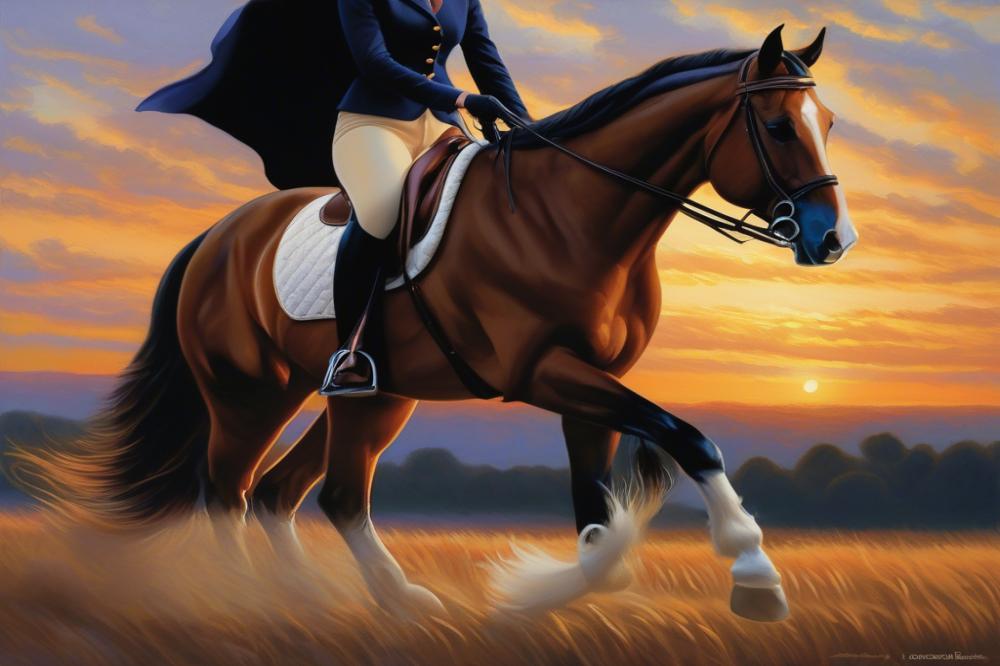Maintaining Comfort While Riding a Tennessee Walking Horse
Riding a Tennessee Walking Horse can be an enjoyable experience, but comfort is key for both the rider and the horse. Happy riders can fully appreciate the beauty and grace of these gentle animals. When riders feel at ease, they can focus on the ride rather than discomfort. This can make all the difference on longer rides.
The horse’s gaits are part of what makes it special. Known for its smooth, four-beat gaits, a Tennessee Walking Horse offers a comfortable journey. The flat walk and running walk are particularly known for their soothing motions. Riders can feel as if they are gliding along, which adds to the overall joy of horsemanship.
This article will outline essential tips for creating horse riding comfort while enjoying the ride. You will discover how to correctly adjust your saddle, choose appropriate gear, and maintain proper posture. These practical strategies will help you enjoy every ride, turning each outing into a memorable adventure. Let’s get started on ways to enhance your comfort while riding!
saddle fit

Importance of a Well-Fitted Saddle
A well-fitted saddle is crucial for both the horse and the rider. When the saddle fits properly, it supports the horse’s movement. This allows for a more enjoyable ride. A good fit can prevent discomfort and injuries. For the rider, a snug fit helps maintain balance and control. Comfort is key for long rides and ensures better performance.
Signs of Improper Saddle Fit
Recognizing signs of improper saddle fit is essential. If the saddle slips to one side, it may not be suitable. A horse that exhibits behavior changes, such as resistance or sensitivity, might be uncomfortable. Look for signs like white hair or sore spots on the back. These can indicate pressure points where the saddle does not sit right. Poor saddle fit can lead to major health issues for your horse. Always check the fit regularly.
Adjusting Saddle to Enhance Comfort for Both Horse and Rider
Adjustments can make a significant difference. Start by checking the gullet width to ensure it is appropriate for the horse’s shape. Adjusting the girth can help the saddle stay in place better. Make sure the stirrup leathers are even, allowing for balanced riding. Experiment with different pad thicknesses if needed. A thicker pad can provide more cushioning. Remember, a little adjustment can enhance overall comfort. Don’t hesitate to make small changes for a perfect fit.
Proper Posture

Maintaining good posture while riding is essential for both comfort and safety. Sit tall in the saddle. Your back should be straight and shoulders relaxed. Keeping your chin level with the horizon helps you stay balanced. Think about where your weight is placed. Distributing your weight evenly helps you connect with the horse.
Benefits of proper alignment cannot be overstated. It reduces the risk of injury for you and your horse. Good posture allows for better communication between rider and mount. When you are aligned correctly, your movements are fluid. This can lead to a more enjoyable ride, enhancing the experience for both of you.
Exercises to Improve Posture Off the Horse
To strengthen your core, consider specific exercises. Planks are effective and can be done anywhere. Standing tall while holding a stretch helps too. Focus on activities that engage your back muscles. Incorporating yoga can improve flexibility and balance. Sit or stand with a book on your head to practice alignment daily. These exercises may feel simple, but they contribute significantly over time.
Practice maintaining your center of gravity. This skill serves you well when riding. Work on squats to build leg strength, which is crucial for stability in the saddle. Using a mirror can help you check your form during these workouts. Regular practice creates muscle memory, which translates to better posture while riding your horse.
Riding Gear

Choosing the Right Riding Gear for Comfort
Selecting appropriate gear can greatly improve your riding experience. Comfort is key when engaging with any horse. Properly fitted equipment prevents discomfort during long rides. It also helps prevent injuries that arise from poorly designed gear. Therefore, investing in quality items is crucial.
Overview of Saddles, Pads, and Riding Boots
Saddles come in various styles, each designed for different purposes. A Western saddle may offer more security, while an English saddle provides a closer feel to the horse. Selecting the right saddle ensures stability. Additionally, saddle pads play a vital role in comfort. They provide cushioning between the saddle and the horse, reducing pressure points. A well-chosen pad can absorb shock and distribute the rider’s weight evenly.
Riding boots also warrant attention. Choose footwear that fits well and provides adequate support. Good boots should have a slight heel to prevent slipping out of the stirrups. Materials like leather are durable and can mold to your feet over time. Clarity in choosing footwear helps maintain comfort on long rides.
Importance of Weather-Appropriate Clothing
Riding in varying weather conditions requires careful consideration. On hot days, breathable fabrics are essential to keep you cool. In contrast, cold weather calls for layers. Wearing a good base layer will trap heat without adding bulk. A waterproof jacket can also protect against rain while allowing for flexibility.
Stay mindful of the sun’s exposure. A wide-brimmed hat or UV-protective clothing can shield you. Remember that comfort enhances enjoyment. Suitable clothing allows you to focus more on riding and less on discomfort. Choosing gear that accommodates the weather enhances overall riding experiences.
Horse Care
Grooming is more than just a routine; it’s crucial for maintaining the horse’s health. Regular brushing helps remove dirt and loose hair. It also encourages blood circulation and can reveal any skin issues or injuries. Health check-ups by a veterinarian are equally essential. Professional evaluations help catch problems before they become serious. Keeping vaccinations and deworming on schedule supports not only the horse’s vitality but also the comfort of the rider.
The fitness level of your horse plays a vital role in the overall riding experience. A well-conditioned horse is usually more responsive and easier to handle. This creates a smoother ride, allowing both the rider and the horse to enjoy the journey more. Ensuring that your horse gets enough exercise leads to better stamina. It can also reduce the risk of fatigue during long rides, translating to comfort for both partners.
Pay attention to the signs of discomfort in your horse. Animals often communicate through their behavior. An unwillingness to move, frequent tail swishing, or pinned ears might indicate pain or irritation. Observing these signals can prevent bigger issues. Addressing discomfort quickly will help maintain a fulfilling experience for both horse and rider. Remember, a happy horse usually leads to a happier ride.
riding techniques
To enjoy the smooth gaits of a Tennessee Walking Horse, it’s important to understand some key riding techniques. This breed offers a comfortable ride with its distinct natural gaits. Many riders cherish the unique experience they provide. You’ll feel the difference as you mount up and start moving.
Soft hands are critical when you are in the saddle. Maintaining a light grip on the reins allows for a better connection with your horse. Tight hands can create tension. This tension disrupts the natural flow of movement. Use gentle cues instead of harsh pulls. Your horse will respond better to a soft touch.
Body cues also play a role in communication. Shifting your weight slightly can signal your horse to turn or speed up. Leaning forward or back helps direct your steed. Learning to use your body effectively takes practice. As you ride more, these signals become second nature.
Tips for Beginners and Experienced Riders
Beginners should focus on relaxation. Feeling nervous can lead to unintentional movements. Try to breathe deeply and sit quietly. Building confidence on your horse takes time, so don’t rush it. Watching experienced riders can provide useful insights. They showcase how to sit gently and maintain balance.
Seasoned riders might explore more advanced techniques. Experimenting with different gaits can enhance your experience. Challenge yourself by riding in various environments. This variation will help you become a more adaptable equestrian. Each outing will improve your skills and confidence.
Remember that comfort begins with your gear. A well-fitted saddle promotes a better ride. Quality riding boots also support your experience. It’s easier to focus on the ride when you feel good.
Finally, consider your horse’s well-being. A horse that is cared for and in good condition will provide a smoother ride. Pay attention to their health, and adjust your riding style as needed. A happy horse contributes to a happy rider.
Trail Riding
Strategies for Comfortable Trail Riding
Start by checking your tack. Comfortable saddles and gear make a big difference. Adjust the saddle fit properly so it won’t cause discomfort. Wear padded riding pants to minimize soreness. Footwear matters too; sturdy boots protect your feet on uneven ground. Be aware of how you sit. Keep your posture upright to avoid aches and pains.
Understanding Terrain and Its Impact on Riding Comfort
Various terrains present different challenges. Rocky paths can jolt both horse and rider. Learning how to navigate these spots helps maintain a smooth ride. Thick woods may limit visibility. Stay alert for branches or low-hanging limbs. Open fields feel more relaxed but can lead to sudden distractions. Knowing how each type of terrain affects comfort lets riders prepare better.
Preparation and Planning for Long Rides
Long rides require more focus and care. Always plan your route in advance. Look for areas to rest and hydrate. Carry water for both yourself and your horse. Pack some snacks to keep energy levels up. A small first aid kit can handle any minor issues that arise. Take breaks regularly to stretch your legs and check your horse. This keeps everyone happy and comfortable.
Rider Safety
When riding, safety should be your top priority. Careful planning can prevent many accidents. Always make sure to double-check your gear before heading out. Your saddle should be secure, and stirrups must be adjusted to your leg length. An accidentally loose saddle can lead to discomfort or worse.
Essential safety tips while riding
Stay aware of your surroundings. Watch for sudden movement in the brush or the sounds of other animals. Your horse may spook if something surprises it. Riding with a partner is often safer than going alone. Communicate clearly with each other about your plans and any changes along the trail.
Importance of wearing helmets and protective gear
Wearing a helmet is crucial. It protects your head from injury in case of a fall. Make sure your helmet fits properly; it should be snug but not too tight. Along with helmets, consider wearing other protective gear like boots and gloves. These items provide support and grip, which can help prevent slips and falls.
How to handle unexpected situations on the trail
Unexpected events can occur at any time. If your horse encounters wildlife, remain calm. Speak softly to your horse to keep it relaxed. If you need to turn back due to dangerous weather, do so without haste. Rushing can lead to accidents.
Never panic if you feel your horse becoming unmanageable. Instead, focus on regaining control. Use gentle pressure on the reins and guide the horse calmly. In case you fall, try to roll away from the horse instead of attempting to brace yourself. This habit can reduce the chances of injury.
Equestrian Health
Maintaining Physical Health as a Rider
Riding can be physically demanding. Muscles work hard while balancing on a horse’s back. This requires strength in the core, legs, and arms. Riders often overlook their fitness. Regular exercise helps improve stamina and control. Goals should include both endurance and muscle strength. Engage in activities like running, swimming, or cycling. These can increase cardiovascular fitness, making riding easier.
Benefits of Strength and Flexibility Training
Strength training plays a key role. It helps riders maintain proper posture and balance. Exercises like squats or lunges build leg muscles essential for riding. Flexibility is just as important. Stretching routines enhance mobility in the hips and back. Improved flexibility can lead to better riding techniques and reduce injury risk. Consider yoga or Pilates for a gentle yet effective way to boost both strength and flexibility.
Importance of Staying Hydrated and Nourished During Rides
Hydration is crucial on hot days. Dehydration can lead to fatigue and poor performance. Always carry water while riding. Small sips can keep energy levels steady. Nutrition matters too. Eating a balanced meal before a ride is beneficial. Focus on foods rich in protein and carbohydrates for energy. Snacks like nuts or energy bars can provide quick fuel during long rides. Staying nourished helps maintain focus and enjoyment on horseback.
Final Thoughts on Maintaining Comfort While Riding
In summary, maintaining comfort while riding a Tennessee Walking Horse involves several key strategies. First, remember the importance of good saddle fit. An ill-fitting saddle can lead to discomfort for both horse and rider. It is also essential to focus on achieving proper posture. Sitting correctly can reduce strain and enhance balance while on the horse.
Consistency is crucial. Practicing these recommended techniques over time will help you develop a better riding experience. Regularly check the equipment and your position in the saddle. Small adjustments can lead to great improvements. Your comfort level will increase significantly when you pay attention to these details.
Creating a positive riding experience is well within your reach. With time and experience, you’ll establish a solid connection with your horse. This bond will not only enhance your enjoyment but also improve your overall confidence. So, gear up and ride with the assurance that comfort is achievable. Happy riding!



